Inside: If you’re struggling with kids who act controlling, this is the missing piece to help! Plus, a simple 3-part guide for dealing with controlling kids or strong-willed kids. Post contains affiliate links that may, at no extra cost to you, earn a small commission.
My daughter looked at her older brother, and immediately upon noticing he was looking at her, she shouted, “I don’t want you to look at me!”
(I mean, how dare he look at her?)
So like any reasonable older brother would do, he opened his eyes wide, inched his face closer to hers and gave her The Big Giant Death Stare.
Without uttering a single word, his face screamed You can’t make me stop looking at you, and I’m going to prove it.
“Mom! He’s STILL LOOKING at me!”
She took a breath preparing for the long whining words that would follow.
“Stop. Looking. At. Me. STOOOOOOOPPPPPPPP IIIIIIIIIIITTTTTTTTTT!”

This is usually the point where I start cringing. My skin crawls. I hate dealing with these petty sibling fights.
Then without realizing it, I make it worse.
I step in and say something like, “That’s enough. Both of you just stop it.”
Instead of stopping, he slides closer at her face, using his index fingers and thumbs to hold each of his eyes open even wider. And she (like every sibling story you’ve heard a million times before) just loses it and screams something incomprehensible in his face.
My words again fall on deaf ears. “Stop. Both of you. Just stop. You know how to talk to each other with respect and kindness.”
It’s brewing chaos. Not one person is actually listening.
Here’s the problem when dealing with controlling kids.
Trying to control, reason with or stop controlling kids only escalates the problem.
The more control you try to assert, the more stubborn your controlling child gets, and the power struggle is GAME ON barreling forward full-throttle.
It’s a never-ending vicious cycle.
There’s a missing piece.
When kids are digging their heels into all these controlling or strong-willed behaviors, they are feeling quite powerless.
There’s no reason for a child to bother with seeking control unless they are feeling completely out of control.
Parents might try to control more in a situation where they perceive the child is trying to control them because they, too, feel powerless.
This only increases the child’s desire for control.
As a simple example, you’ll see this when you try to make a controlling child sit in the corner and they won’t go. You put the child in the corner, and they fight you and try to get out again and again – and again.
You’ll also see this with older kids when you lay out a boundary – like taking away a tablet – and the child goes to any measure to defy you and sneak the tablet when you’re not looking.

In general, these are things you may see with kids who desire control…
- A child has a seemingly dominant and controlling personality.
- They resist being told what to do all the time.
- They resort to being physically mean or picking on others.
- They are often labeled them as “bad” “naughty” “mean” or “bossy.”
- They try to tell another child what toys they can play with.
- They say “no” to everything.
- They refuse to drink from a certain cup.
- They won’t get dressed or change clothes.
- They will scream and tell you, “That’s not the right way.”
So how do you set boundaries and turn it all around with a controlling child?
(Because kids who are feeling out of control definitely need a parent’s help and guidance!)
This is the secret.
When responding to controlling kids, the secret isn’t to control them more or to try to stop their need for control or to prove to them they don’t need to act controlling.
The secret is this: Help them find something they can control that is okay with you and them.
This gets you on the same team, helps meet the kids’ need for control and keeps them working within the boundaries you set in place.
To help give you a clear step-by-step guide, I like to share about Language of Listening®, the 3-part parenting framework I use and teach to parents just like you.
SAY WHAT YOU SEE®
This framework and this approach always starts with one thing: SAYing WHAT YOU SEE® without teaching, fixing, questions or judgment.
SAY WHAT YOU SEE is the critical step in parenting. This is the step of connection. This is where it gets you out of your head, where we live in judgment and logical reasoning, and into the moment with a child where we can both agree on what’s happening.
So when we are able to SAY WHAT WE SEE, it’s the neutral zone where we can meet our children. From there you can provide guidance to your children.
And that’s what parenting is all about.
In the above, “He’s looking at me” example, it might sound something like this:
“You don’t want him to look at you! You hate that! You’d much rather be invisible or have him go away. That way he’d never see you.”
Other responses that could work in a variety of situations might sound something like this:
“That’s not the way you wanted it. You wish you could…”
“You want to…”
Stating what the child wants or wishes is a great starting point for turning the situation around. Only once kids feel heard and understood will they willingly open up to your guidance and see solutions with less resistance.
Related: Two Words That Will Tame a Temper Tantrum Every Time
CAN DOs.
If you see something you don’t like, you name a CAN DO for your child. An alternative — something the child can do to meet their needs. Helping your child see what they CAN control instead is an empowering shift!

Here are some quick examples.
Child doesn’t want someone to look at them.
- You can close your eyes.
- You can leave the room.
- You can pretend your invisible.
- You can cover yourself with a blanket.
Child wants to go out with friends and is not allowed.
- You can decide where you and I go together.
- You can decide what game we play at home.
- You can be alone in your room.
- You can go to the park. I can take you if you want.
Child wants another child to give them a toy.
- You can ask her for a turn.
- You can wait until she is done.
- You can get one of your toys to trade with her.
- You can keep toys you only want for yourself hidden in your room before friends come over.
- You can put it on your birthday or Christmas list and have your own to keep forever.
Child resorts to being physically mean or picking on others.
- If you’re so angry that you want to hit, you can hit a pillow or rip this paper.
- You can yell those words in the bathroom.
- You can yell at the wall in your bedroom.
- You can write it down on paper and put it under your pillow.
Ultimately, the best solutions will come from the child. And if the child already has a high need for power and control, they will LOVE deciding their own solutions over you providing them.
To help your child come up with solutions, I love using the all-purpose CAN DO like this: There must be something you can do!
Or if you’re open to negotiation: There must be something we can do!
Related posts:
Name STRENGTHs.
One of the premises of Language of Listening is that all children have every possible inner strength. This is important because children act according to who they believe they are.
Literally every possible strength that your child needs to succeed in the world is already inside him or her.
When a child accepts the CAN DO, you can point out the STRENGTH.
Naming a STRENGTH always comes from something the child did, so it’s never fluff or empty praise. It’s grounded in observation and true things that happened.
When you SAY WHAT YOU SEE and you can tell a child, “You did this. You found a way stay in control in a way that works for everyone. That shows you know how to solve problems,” you anchor the strength in a way that they can identify with it.
It becomes who they are and their future actions are based out of it. This is the critical piece of why STRENGTHs work.
The best part: Controlling kids transform into self-controlled kids.
When you’re able to show your children how they can meet their need for control in a way that works for everyone, this need gets filled. They feel in control, and they stop trying to seek power in ways you might not like very much.
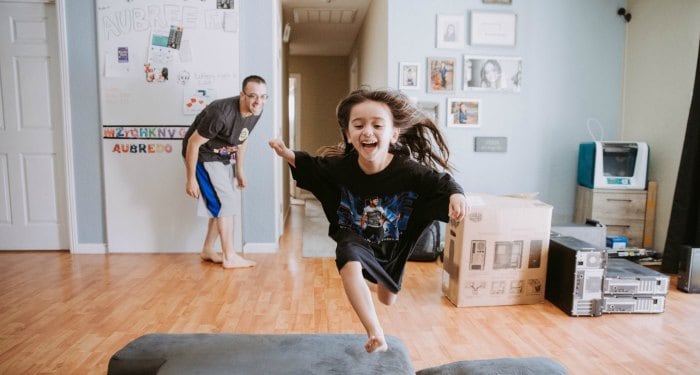
When they feel in control, they’re not threatened by things. It allows them to be a very calm and peaceful person.
Ghandi, for example, was one of the most powerful people of all time, and he knew it. But he didn’t need to go around and prove how powerful he was.
It’s this quiet confidence you start to see in your kids.
Like when a child sees her older brother is looking in her direction, and she doesn’t like it…
You’ll notice her quietly walk from the kitchen table, grab a blanket from the living room, walk back to the kitchen and sit at the table with a blanket over her head.
And just like that…
She knows her brother doesn’t have the power to send her into an emotional tailspin.
She knows the greatest power will always come from within.
And no one in the world can take it from her.
Grab your free printable.
Chances are you won’t remember all the ideas from this post. Inside your printable, you’ll get a complete list of CAN DO examples to help you remember them in a pinch.
PLUS, get a bonus list of quick exercises and games you can do in 10 minutes or less to help your kids develop better self-control.
Here’s a sneak preview…
- Download the checklist. Join 37,000+ parents who receive my weekly-ish tips and ideas and get the printable delivered straight to you inbox.
- Print. Any paper will do the trick, but cardstock
would be ideal.
- Place it on your refrigerator. Check off the things as you go and don’t forget a thing!
Want more on parenting?
- How to Handle Back Talk and Disrespect Like a Parenting Warrior
- The Most Powerful Way to Respond When Your Child Feels Rejected
- One Genius Phrase Every Parent Needs When Their Kid Says “I Can’t”
- Boundaries, Routines and Early Bedtimes: 13 Habits That Raise Well-Adjusted Kids
I've created a free email series just for you! If you are struggling with teaching your child to listen, this series will help transform your parenting. Yes, really. I've seen my proven strategies work time and time again for parents. I know it can work for you too.
After taking my free email series, you will:
- Learn simple, yet highly effective listening strategies
- Experience a stronger connection with your child
- Enjoy more peaceful parenting days
- Gain more cooperation from your child

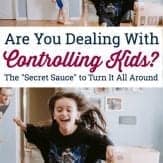
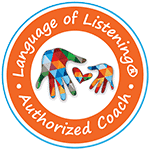
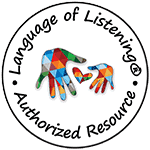
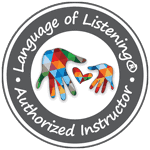









I love these ideas. I’ve read Say What You See and have tried and tried to implement this approach with my 3 year old. But. What do you do when they just melt down and keep screaming indefinitely? When none of the Can Dos are good enough? Sometimes the approach works beautifully, but other times… complete failure. (She was a preemie but she doesn’t have autism or other disorders, and language skills are age appropriate or better.)
I guess I’m wondering – is this just because she’s 3, or do I need more practice and consistency, or… ?
I really enjoyed this article as its timely with my very headstrong and controlling 4yo. She bullies her 7yo brother who is my highly sensitive child and won’t hit back. How to help him stand up for himself and how to help her with her controlling ways. This article has helped with one issue. I’m still praying about the other. I homeschool, so he doesn’t have others to do that at school or anything. He won’t say a harsh word about or to anyone. He’s very gentle. He also doesn’t like tickling because its too hard. He has no learning disabilities and is on target for all milestones. He’s very empathetic. I just wish he’d defend himself just a bit.
Yes! Love it! We talk a lot about you can’t control what other people say or do, but you can control yourself and your reactions to others. Than we talk about, like you said, what they can do…close their eyes. walk away, ask for help (from an adult), breathe, pray for help, etc.
Hi! The download and subscribe button for the printable checklist is not working. I’d like to get a copy of this! Thanks
This has been the best tangible advice. Can’t wait to write these 3 steps on my fridge, on my hand, on my husband hand… lol anywhere that we can remember them!
Question- does step 3 need to be related to the rest of the sequence? Can you offer an example? Hope you respond! We’d love to try this!
This is the exact place we are in lately. The more we try to control her, the worse it gets.
Yesterday she was headed for another dessert at a BBQ, without asking us. I intercepted her and (now I know this was wrong said, “you can’t have another dessert. You have had enough. ”
She tried to grab one and I put my body in front of hers. Quickly turned into a scene having to dart left and right to stop her. When she noticed people watching, she became self conscious and walked away. I told her, you can have a healthier snack like fruit or vegetables instead.
—–
So looking back, would it better to say “oh you really liked that cookie you had. You wish you could have another dessert. Having too much sugar isn’t healthy for our bodies, and we need to also leave dessert for other people. So what can you have instead?”
—
Am I on track? Connect with what she is feeling. Help her feel heard and understood. And include her in a solution.
Appreciate any feedback. Thank you!